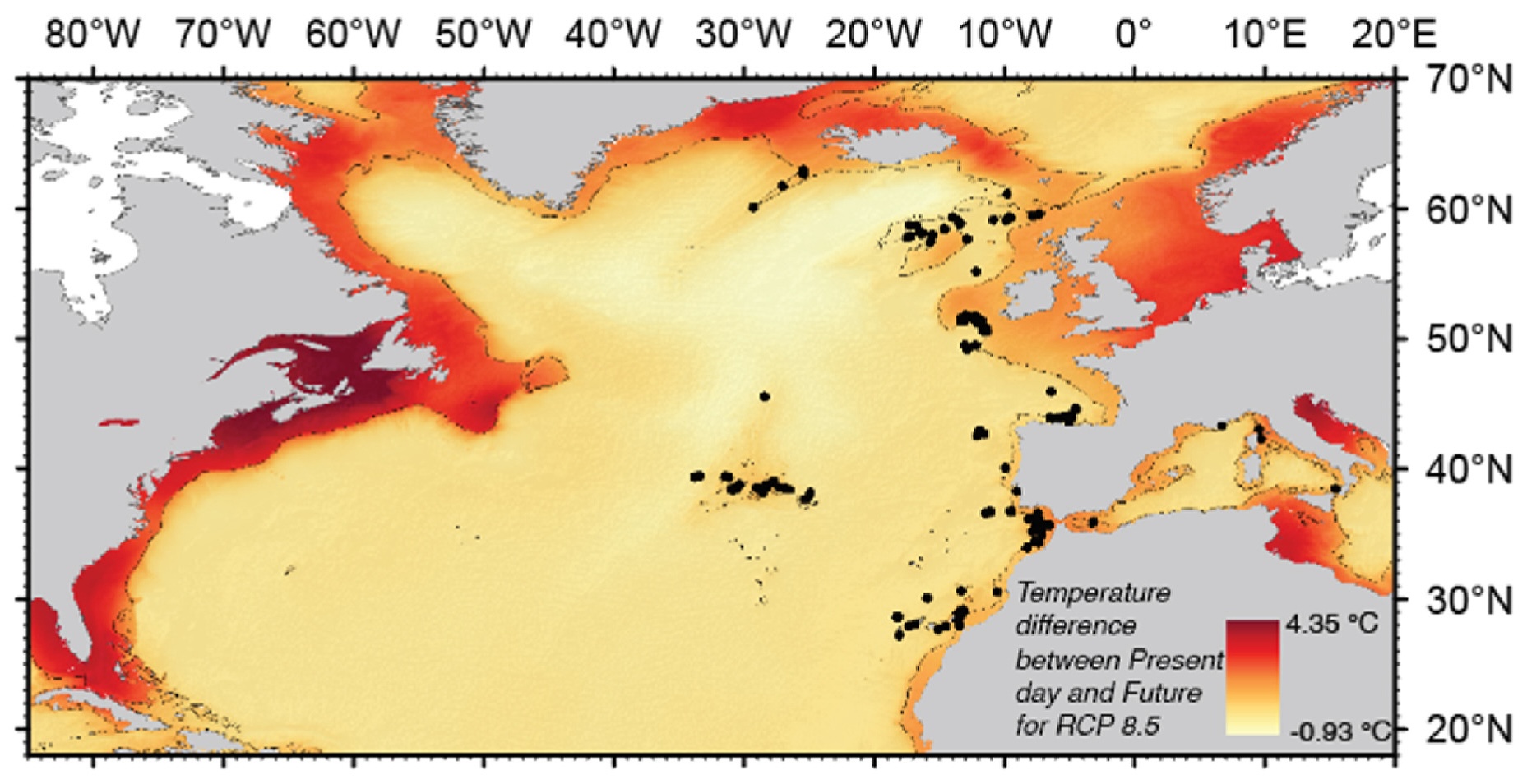Present and future distribution of the deep-sea habitat-forming sponge – Pheronema carpenteri (Thomson, 1869) in a changing ocean
Inês Gregório, Joana R. Xavier, Andrew J. Davies
Sponges play vital roles in the ecosystem function of the deep sea. Some species, such as the birds’ nest sponge Pheronema carpenteri, can form highly structured and dense habitats (i.e., aggregations), which contribute to the increase of nearby biodiversity. Climate change is expected to have a pronounced impact on the deep sea, particularly on Vulnerable Marine Ecosystems such as those formed by the glass sponge Pheronema carpenteri. These ecosystems are especially vulnerable to climate change and other anthropogenic activities since they are formed by sensitive species with slow growth rates and limited dispersal capability, which can hinder their adaptive capability and recovery after disturbance. The impact that climate change will have on Pheronema carpenteri remains unclear, although it is expected to influence the species’ available suitable habitat and distribution range. The aim of this study was to predict the distribution of the glass sponge Pheronema carpenteri both for present day and under several future climate scenarios in the North Atlantic. An ensemble modelling approach was employed, combining Maximum Entropy, Generalized Additive Models and Random Forest techniques. Changes in available suitable habitat were projected to present day and to three future climatic scenarios (RCP 2.6, RCP 4.5 and RCP 8.5). Depth, temperature, particulate organic carbon and dissolved oxygen were identified as the key predictor variables of habitat suitability, which patterns suggest a strong influence of the Mediterranean Outflow Water in shaping the present-day distribution of the species, particularly in the eastern North Atlantic. Our results indicate a potential expansion of available suitable habitat in the northernmost region of the study area, with a contraction at lower latitudes, more prominent in the Portuguese archipelago of the Azores. Under the worst-case scenario (RCP 8.5), the area of suitable habitat will likely double compared to present, occupying approximately 6% of the total study area. The management and conservation of areas where Pheronema aggregations can occur should be articulated between different countries, particularly in the Northeast Atlantic since, cumulatively, most of Pheronema’s climate refugia occurs within their EEZs. Nonetheless, a significant proportion of the species’ climate refugia is located in areas within the High Seas (i.e., Rockall plateau).
[sendpaper paperurl=”2024_Gregorio_DSR.pdf”]
Full Citation
Gregório I, Xavier JR, Davies AJ (2024) Present and future distribution of the deep-sea habitat-forming sponge – Pheronema carpenteri (Thomson, 1869) in a changing ocean. Deep Sea Research Part I: Oceanographic Research Papers: 213, 104390


